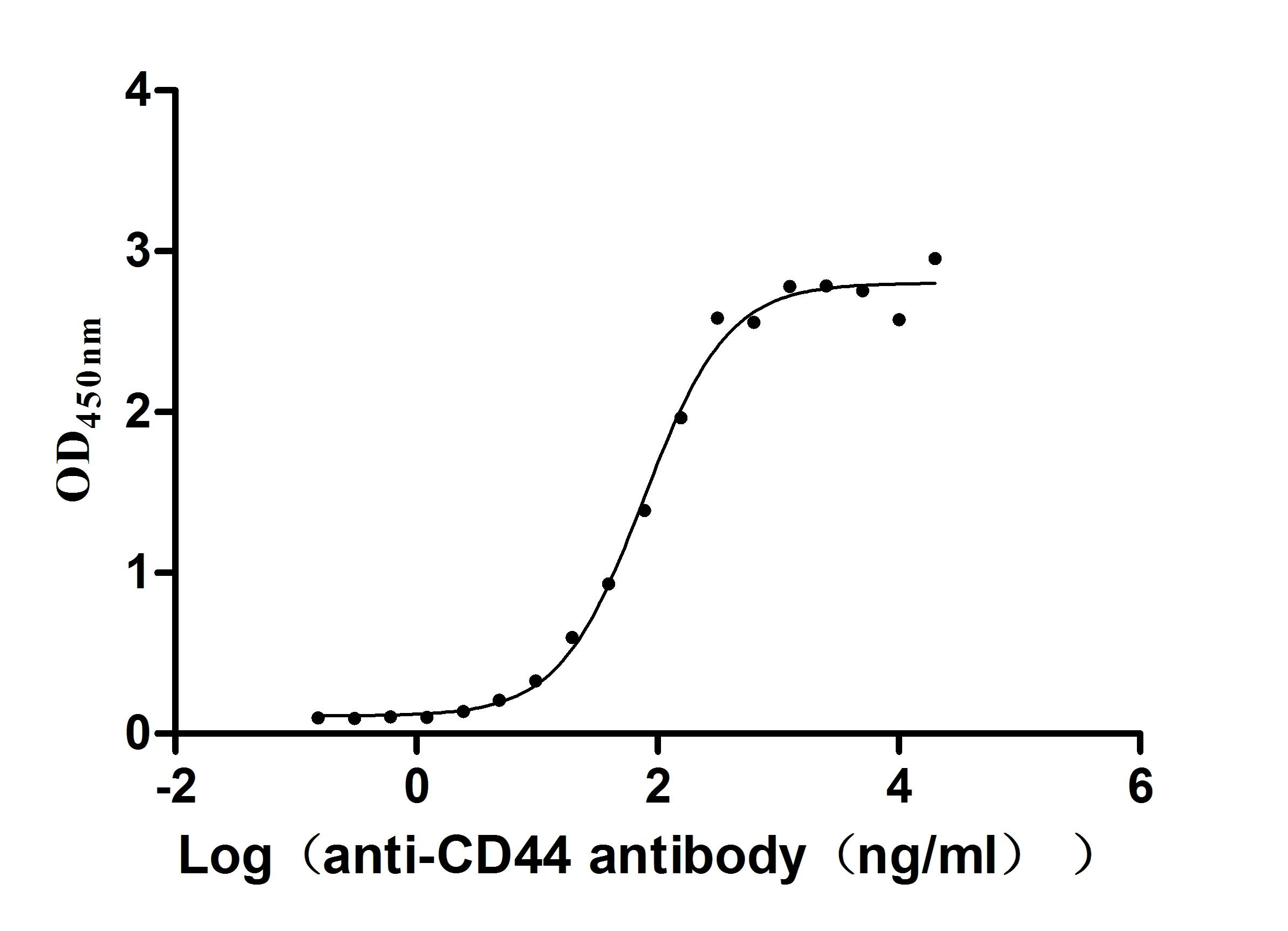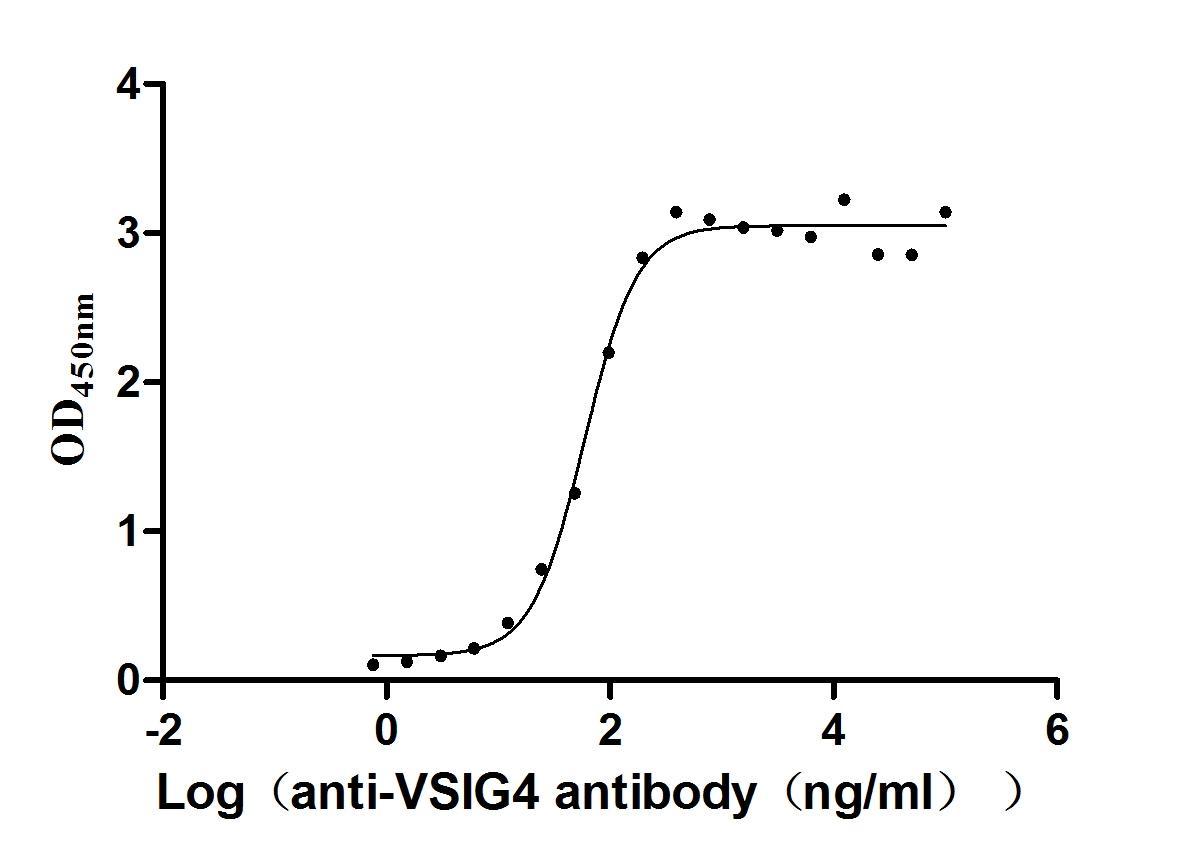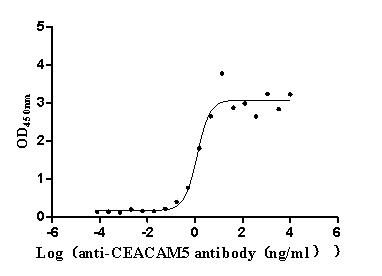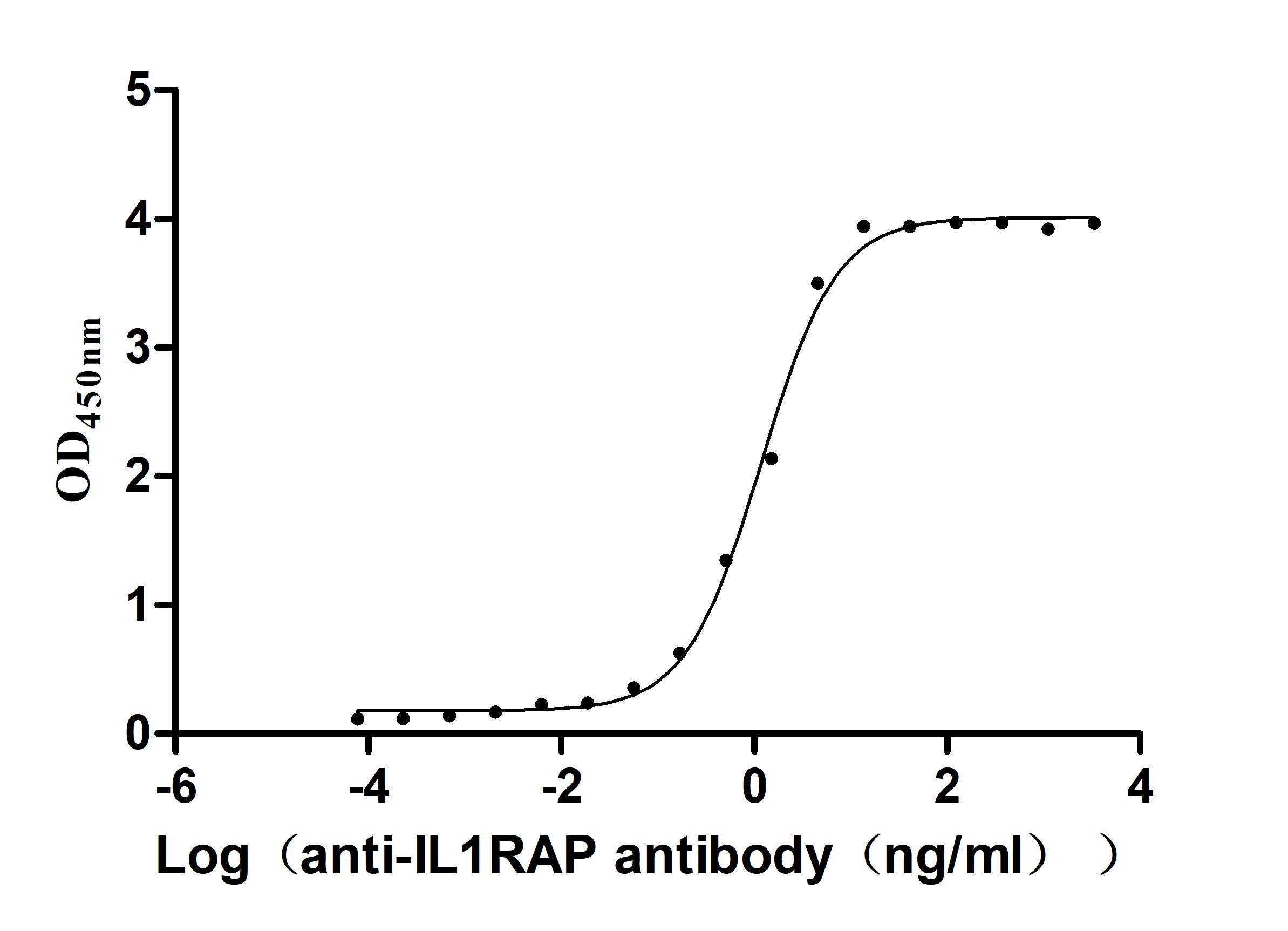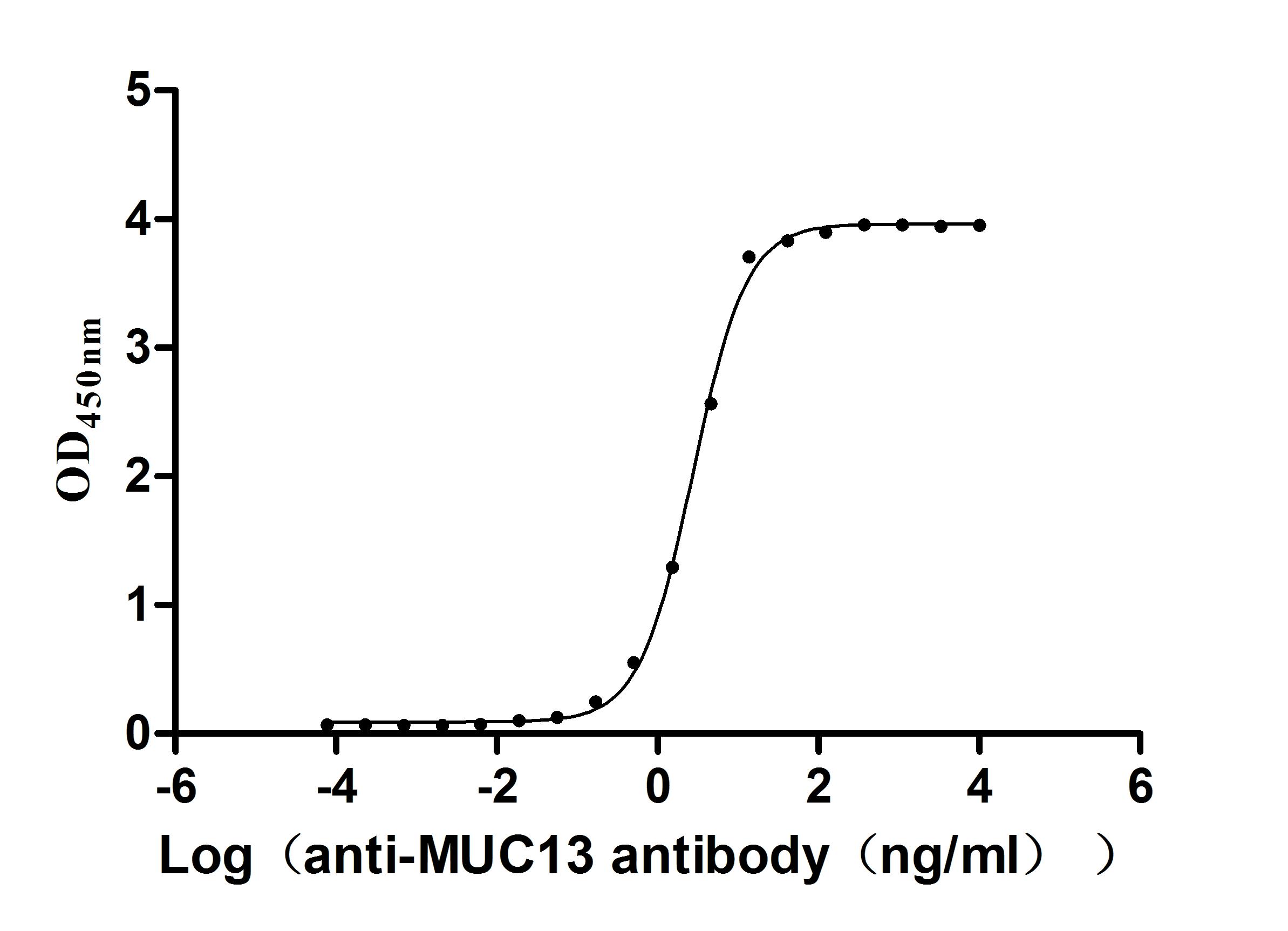Recombinant Human Calsenilin (KCNIP3)
-
中文名稱:人KCNIP3重組蛋白
-
貨號(hào):CSB-YP897537HU
-
規(guī)格:
-
來源:Yeast
-
其他:
-
中文名稱:人KCNIP3重組蛋白
-
貨號(hào):CSB-EP897537HU
-
規(guī)格:
-
來源:E.coli
-
其他:
-
中文名稱:人KCNIP3重組蛋白
-
貨號(hào):CSB-EP897537HU-B
-
規(guī)格:
-
來源:E.coli
-
共軛:Avi-tag Biotinylated
E. coli biotin ligase (BirA) is highly specific in covalently attaching biotin to the 15 amino acid AviTag peptide. This recombinant protein was biotinylated in vivo by AviTag-BirA technology, which method is BriA catalyzes amide linkage between the biotin and the specific lysine of the AviTag.
-
其他:
-
中文名稱:人KCNIP3重組蛋白
-
貨號(hào):CSB-BP897537HU
-
規(guī)格:
-
來源:Baculovirus
-
其他:
-
中文名稱:人KCNIP3重組蛋白
-
貨號(hào):CSB-MP897537HU
-
規(guī)格:
-
來源:Mammalian cell
-
其他:
產(chǎn)品詳情
-
純度:>85% (SDS-PAGE)
-
基因名:KCNIP3
-
Uniprot No.:
-
別名:4933407H12Rik; A type potassium channel modulatory protein 3; A-type potassium channel modulatory protein 3; AI413860; Calsenilin; CSEN; CSEN_HUMAN; DRE antagonist modulator; DRE-antagonist modulator; DREAM; EF hand transcription factor; KCHIP 3; KChIP3; KCNIP 3; Kcnip3; Kv channel interacting protein 3; Kv channel-interacting protein 3; MGC18289; Potassium channel interacting protein 3; R74849
-
種屬:Homo sapiens (Human)
-
蛋白長度:full length protein
-
表達(dá)區(qū)域:1-256
-
氨基酸序列MQPAKEVTKA SDGSLLGDLG HTPLSKKEGI KWQRPRLSRQ ALMRCCLVKW ILSSTAPQGS DSSDSELELS TVRHQPEGLD QLQAQTKFTK KELQSLYRGF KNECPTGLVD EDTFKLIYAQ FFPQGDATTY AHFLFNAFDA DGNGAIHFED FVVGLSILLR GTVHEKLKWA FNLYDINKDG YITKEEMLAI MKSIYDMMGR HTYPILREDA PAEHVERFFE KMDRNQDGVV TIEEFLEACQ KDENIMSSMQ LFENVI
-
蛋白標(biāo)簽:Tag?type?will?be?determined?during?the?manufacturing?process.
The tag type will be determined during production process. If you have specified tag type, please tell us and we will develop the specified tag preferentially. -
產(chǎn)品提供形式:Lyophilized powder
Note: We will preferentially ship the format that we have in stock, however, if you have any special requirement for the format, please remark your requirement when placing the order, we will prepare according to your demand. -
復(fù)溶:We recommend that this vial be briefly centrifuged prior to opening to bring the contents to the bottom. Please reconstitute protein in deionized sterile water to a concentration of 0.1-1.0 mg/mL.We recommend to add 5-50% of glycerol (final concentration) and aliquot for long-term storage at -20℃/-80℃. Our default final concentration of glycerol is 50%. Customers could use it as reference.
-
儲(chǔ)存條件:Store at -20°C/-80°C upon receipt, aliquoting is necessary for mutiple use. Avoid repeated freeze-thaw cycles.
-
保質(zhì)期:The shelf life is related to many factors, storage state, buffer ingredients, storage temperature and the stability of the protein itself.
Generally, the shelf life of liquid form is 6 months at -20°C/-80°C. The shelf life of lyophilized form is 12 months at -20°C/-80°C. -
貨期:Delivery time may differ from different purchasing way or location, please kindly consult your local distributors for specific delivery time.Note: All of our proteins are default shipped with normal blue ice packs, if you request to ship with dry ice, please communicate with us in advance and extra fees will be charged.
-
注意事項(xiàng):Repeated freezing and thawing is not recommended. Store working aliquots at 4°C for up to one week.
-
Datasheet :Please contact us to get it.
相關(guān)產(chǎn)品
靶點(diǎn)詳情
-
功能:Calcium-dependent transcriptional repressor that binds to the DRE element of genes including PDYN and FOS. Affinity for DNA is reduced upon binding to calcium and enhanced by binding to magnesium. Seems to be involved in nociception.; Regulatory subunit of Kv4/D (Shal)-type voltage-gated rapidly inactivating A-type potassium channels, such as KCND2/Kv4.2 and KCND3/Kv4.3. Modulates channel expression at the cell membrane, gating characteristics, inactivation kinetics and rate of recovery from inactivation in a calcium-dependent and isoform-specific manner.; May play a role in the regulation of PSEN2 proteolytic processing and apoptosis. Together with PSEN2 involved in modulation of amyloid-beta formation.
-
基因功能參考文獻(xiàn):
- TBX2 is a neuroblastoma core regulatory circuitry component enhancing MYCN/FOXM1 reactivation of DREAM targets. PMID: 30451831
- targeting SmgGDS induces nucleolar stress, resulting in profound loss of DREAM target gene expression required for G1, S and G2 progression, and ultimately resulting in cell cycle arrest. PMID: 28806394
- Disruption of DREAM and RB-E2F complexes by oncoproteins from DNA tumor viruses leads to upregulation of cell cycle genes and impairs growth-inhibiting pathways, including the p53-mediated downregulation of cell cycle genes. [review] PMID: 28799433
- This study shows the application of hydrogen-deuterium exchange mass spectrometry and site-directed mutagenesis to investigate the Ca(2+) binding properties and the subsequent conformational changes of full-length DREAM. EF-hands undergo large conformation changes upon calcium binding even though the EF-1 hand is not capable of binding to Ca(2+). PMID: 28627884
- Our approach yields high confidence ranked target gene maps for TP53, DREAM, MMB-FOXM1 and RB-E2F and enables prediction and distinction of CC regulation. A web-based atlas at www.targetgenereg.org enables assessing the regulation of any human gene of interest. PMID: 27280975
- downregulation of these genes through the p53-p21-DREAM-CDE/CHR pathway appears to be a principal mechanism for G2/M cell cycle arrest by p53. PMID: 26384566
- The aim of this study was to investigate somatic mutations and DREAM gene expression in human multinodular goiter PMID: 26319784
- Imatinib induces GIST cell quiescence in vivo and that this process also involves the DREAM complex. PMID: 23786773
- Our results support the hypothesis that KChIPs enhances Kv4.2 functional expression by a 1 : 1 suppression of the N-terminal FERN domain and by producing additional positive regulatory effects on functional channel expression. PMID: 23692269
- GCM1-directed villous trophoblast differentiation is repressed by DREAM PMID: 23300953
- p53 can repress transcription of cell cycle genes through a p21(WAF1/CIP1)-dependent switch from MMB to DREAM protein complex binding at CHR promoter elements. PMID: 23187802
- Genetic variation in the DREAM pathway genes was associated with the extent of pain reporting in a population-based cohort. PMID: 22730276
- The potassium channel interacting protein 3 (DREAM/KChIP3) heterodimerizes with and regulates calmodulin function. PMID: 23019329
- expression of calsenilin leads to a disruption of presenilin 1/gamma-secretase-mediated epsilon-cleavage of N-cadherin, which results in the significant accumulation of N-cadherin C-terminal fragment 1 PMID: 21852538
- The results show that continued human papillomavirus 16 E6/E7 expression is necessary in cervical cancer cells to prevent cell-cycle arrest by a repressive p130-DREAM complex. PMID: 21813705
- These findings suggest that calsenilin degradation is primarily mediated by the UPP and that impairment in the UPP may contribute to the involvement of calsenilin in disease-associated neurodegeneration. PMID: 21216226
- apoptosis inducers as diverse as oncoprotein inhibitors and cell death receptor activators trigger Hrk expression via blockade of DREAM in leukemia cells PMID: 12217801
- Immunoreactivity of calsenilin in the hippocampus derived from an epilepsy patient is significantly decreased compared with normal brain. PMID: 12648752
- calsenilin can be phosphorylated by casein kinase I and that its phosphorylation can be regulated by intracellular calcium. PMID: 12837631
- The level of intracellular calcium can modulate the nuclear translocation of calsenilin and this process does not involve the direct binding of calcium to calsenilin PMID: 15086516
- Calsenilin overexpression in both neurons and reactive astrocytes may play an important role in apoptosis and in Alzheimer's disease pathology. PMID: 15770150
- DREAM is a Ca2+-dependent repressor of the immune response. PMID: 16177826
- The downregulation of the regulator of Ca2+ homeostasis NCX3 by Ca2+-regulated DREAM is a striking example of the autoregulatory property of the Ca2+ signal in neurons. PMID: 16306395
- DREAM plays an important role in human calcitonin gene expression in a Ca(2+)- and cAMP-dependent manner PMID: 16840549
- interaction of DREAM with GRK6 and GRK2, members of the G protein-coupled receptor kinase family of proteins, and their phosphorylation of DREAM PMID: 17102134
- analysis of calcium-binding properties of EF-hands 3 and 4 of calsenilin PMID: 17962406
- CALP and calsenilin are involved in the trafficking of Golgi glycosyltransferases. PMID: 18269347
- These results reveal a new role for KChIP3 in the regulation of calcium regulated secretion and also suggest that the functions of each of the KChIPs may be more specialized than previously appreciated. PMID: 18393943
- DREAM transcripts are present in synovial fibroblast-like cells as well as peripheral blood mononuclear cells from osteoarthritis patients and healthy controls. PMID: 18507845
- Data show that calsenilin/DREAM/KChIP3 is distributed throughout the cytoplasm of SK-N-BE2(C), Jurkat, and HeLa cells and the expression of calsenilin suppresses the ATP-induced increase in intracellular Ca2+ concentrations. PMID: 18628663
- Interplay of the Ca2+-binding protein DREAM with presenilin in neuronal Ca2+ signaling PMID: 18664571
- KChIP4a, KChIP2x, and KChIP3x comprise a novel class of KChIP isoforms characterized by an unusual transmembrane domain at their N termini that modulates Kv4 channel gating and trafficking. PMID: 18957440
- DREAM (downstream regulatory element antagonist modulator) modulates TSHR activity through a direct protein-protein interaction that promotes coupling between the receptor and Galphas. PMID: 19299442
顯示更多
收起更多
-
亞細(xì)胞定位:Cytoplasm. Cell membrane; Lipid-anchor. Endoplasmic reticulum. Golgi apparatus. Nucleus.
-
蛋白家族:Recoverin family
-
組織特異性:Highly expressed in brain. Widely expressed at lower levels. Expression levels are elevated in brain cortex regions affected by Alzheimer disease.
-
數(shù)據(jù)庫鏈接:
Most popular with customers
-
Recombinant Human Pro-neuregulin-1, membrane-bound isoform (NRG1), partial (Active)
Express system: Mammalian cell
Species: Homo sapiens (Human)
-
Recombinant Mouse GDNF family receptor alpha-like (Gfral), partial (Active)
Express system: Mammalian cell
Species: Mus musculus (Mouse)
-
Recombinant Macaca fascicularis CD44 antigen (CD44), partial (Active)
Express system: Mammalian cell
Species: Macaca fascicularis (Crab-eating macaque) (Cynomolgus monkey)
-
Recombinant Human V-set and immunoglobulin domain-containing protein 4 (VSIG4), partial (Active)
Express system: Mammalian cell
Species: Homo sapiens (Human)
-
Express system: Mammalian cell
Species: Homo sapiens (Human)
-
Recombinant Human Interleukin-2 (IL2) (Active)
Express system: Mammalian cell
Species: Homo sapiens (Human)
-
Recombinant Human Interleukin-1 receptor accessory protein (IL1RAP), partial (Active)
Express system: Mammalian cell
Species: Homo sapiens (Human)
-
Recombinant Human Mucin-13(MUC13),partial (Active)
Express system: yeast
Species: Homo sapiens (Human)


-AC1.jpg)

